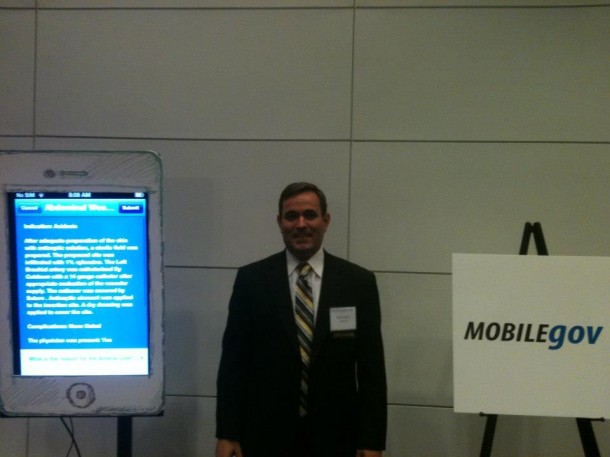
New WashingtonExec Series:
WashingtonExec reached out to executives in the community for their insights on issues concerning the mobility industry. Can mobility remain cost effective while being efficient, and how does it reduce cost for clients?
Today’s participant is Tom Suder, President and Founder of Mobilegov.
Tom Suder:
Now that the infrastructure of mobility is being laid at agencies across government, I think that there are several areas that mobility has a chance to really lower the cost of government while reducing costs.
This is no easy trick, but mobility has the potential.
Field Services – This can be from replacing a clipboard data collection system, that includes a “I have to file my paperwork at the end of the day” component to a law enforcement case management system available at one’s finger tips rather than back at the office or squad car.
These types of apps can not only provide the “information when you need it” component, but also reduce duplicative entering of data and the attendant errors.
Training – Training today is very much like it was at the turn of the century, the 19th century! It could include travel, as well as a couple of days set aside while the work at the office piles up. Mobile training could take place constantly throughout the year. With a mobile device, you can packetize it to such a degree that it would be spaced out over a longer period of time with constant “refresher quizzing.” This will lead to better retention, plus it could be done in those “in-between” times when you have the time at a Starbucks or waiting for a doctor’s appointment.
Digital Publishing – One such area that has the promise of driving down the cost and improving the efficiency of the government is increasing the adoption of digital publishing and eliminating the use of paperwork both to its internal workforce and in its services to its citizens.
Mobility in general and the smart tablet in particular have the potential to revolutionize this area.
The idea of the “Paperless Office” was first mentioned in a BusinessWeek article in 1975. The Federal Government has had a series of “Paperwork Reduction” legislation since 1995.
With the advent of the digital age one would intuitively think that would paper printing would have ended. That isn’t the case. Most information originates from a digital format and may be available for viewing on a computer. ..but is then printed on paper.
Then why are we printing on paper? The reason is the same as to why you don’t read a book on your desktop computer…it isn’t the right form factor. All previous “Paperless Office” have had to deal with this same handicap, but things changed on April 3, 2010 when Apple released the first mass-market smart tablet, the iPad. The tablet has completely changed the way people read books, consume the news, and do their business.
Printing isn’t just paper costs. There are the cost of the printers and the maintenance of these printers. There is the cost of the actual toner. To print a publication, you also have to distribute it via shipping. Version control is a serious issue in paper printing. Also, the collaborative opportunities to share a document are limited.


